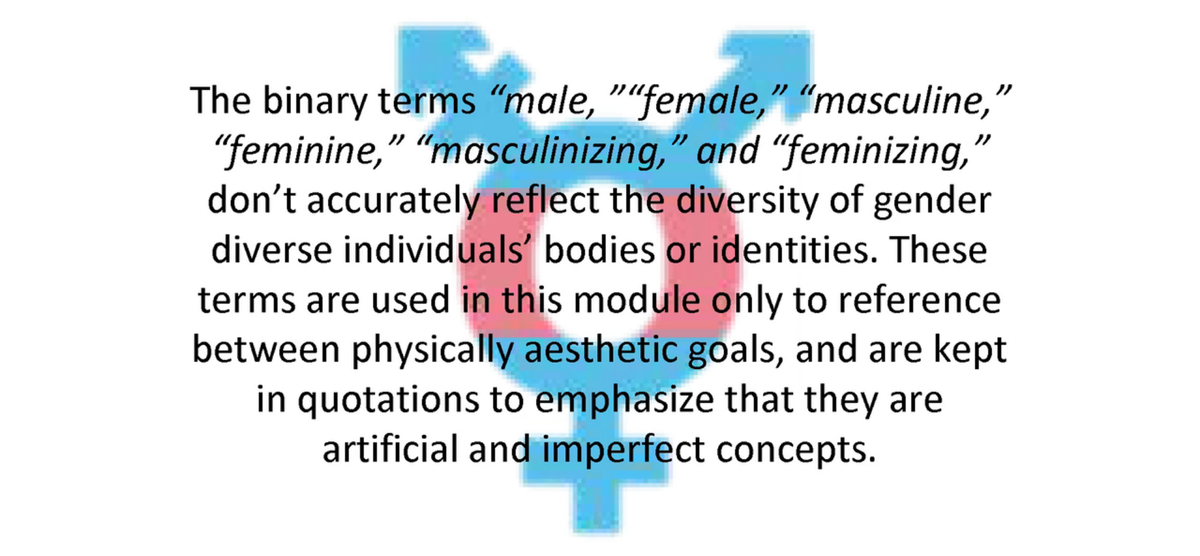TRANSforming Rehabilitative Health for Gender-Diverse People: A Healthcare Practitioner’s Guide
Happy June and most importantly, happy pride month! At a time like this, with the world in such uncertainty, unity and acceptance are needed to help us progress forward. June is the month of pride, and time for the L.G.T.B.Q.I.A.+ community to shine, alongside support from their allies. It's time for teamwork, solidarity and kindness, something needed now more than ever in the world.
As healthcare practitioners, how can we use these same values of teamwork and solidarity to support the L.G.T.B.Q.I.A.+ community? By addressing healthcare discrimination, and including these individuals within our practice, such as gender-diverse people.
But what does gender-diverse mean?
What is Gender-Diverse?
Gender diverse people situate themselves outside of the gender binary system and often do not self-identify as male or female (also known as gender fluid). While notions of gender fluidity may vary from one individual to another, the general consensus is that for these individuals, their gender identity is different from their biological sex, and/or the gender assigned to them at birth. It is important to note that gender is an ‘imperfect concept.’ However, this does not prevent the person from undergoing gender reassignment surgery, or any other body modification processes, such as a mastectomy, vaginectomy, or penectomy, as per their desire. To learn more about the complex issue that is gender, take a look at the online course “Transforming Fitness: Health & Fitness for the Gender-Diverse Population” by Jodi Steele and Celeste Turner.

Healthcare Discrimination Against Gender-Diverse People:
Many patients within the transgender community feel that they are discriminated against at the provincial level, with Ontario’s decision to label some surgeries as essential while foregoing other processes. Patients also feel discriminated against at the local level by being denied primary care.
Surprisingly, many practitioners feel that it is out of their scope of practice. To learn more about the healthcare discrimination gender diverse individuals experience in Ontario, click here.
Unfortunately, this is not limited to a feeling nor a one-time occurrence: 40% of trans people in Ontario have experienced discrimination from their family physician, and 1 in 10 have been denied care or dismissed early from the emergency room; this is one too many Ontarians, and practitioners need to come together to help decrease this number.
A 2015 report of the Trans PULSE Project research study stated that 80% of transgender people in Ontario knew by the age of 14 that their true identity did not match their body, and 75% indicated a need to transition medically through surgery. This number has likely increased since 2016 because gender reassignment surgeries are now covered by the Ontario Health Insurance Plan (OHIP). To learn more about the multi-faceted discrimination faced by these individuals and its impact, click here.
Therefore, educated practitioners are needed for the post-operative recovery to help gender-diverse patients get comfortable in their new skin, regain and grow muscle strength, and achieve their desired aesthetic goals.
The first step towards reducing discrimination and increasing available healthcare for the gender-diverse population is diversely educated practitioners.
Using Physical Exercise to Transform Patients:
As healthcare professionals, we are all familiar with the countless benefits of physical exercise, such as improved mental health, increased energy levels, and strong bones and muscles. For someone recovering from their gender reassignment surgery, the physical rehabilitative exercises provide much support in achieving their aesthetic goals safely, to reduce and eliminate gender dysphoria, and to ensure a healthy recovery.
Rehabilitative exercises will change according to what the patient desires to achieve with their body. For example, those who have undergone a mastectomy –which is the surgical removal of the breasts in order to achieve a desired appearance - require specific post-operative care.
A few of the exercises recommended for the first 7 days of recovery include taking deep breaths to eliminate the anesthetic, as patients wear their surgical binders, and completing 10 ankle pumps every hour that they are awake to reduce blog clots in the calf muscles.
Additional physical rehabilitative exercises include hand pumps, elbow flexion and extensions, and scapular retractions. This intentional, physical behaviour of scapular retractions will help to discourage the rounded-shoulders the mastectomy causes because it leaves patients ‘pulled forward’.
These are just a few of the rehabilitative exercises and considerations recommended in this course, as seen in the image below.

This is a non-exhaustive list, and to explore more rehabilitative exercises in detail, take a look at the “Transforming Fitness: Health & Fitness for the Gender-Diverse Population” course.
About the Course: Transforming Fitness → Health & Fitness for the Gender-Diverse Population
Physical activity and rehabilitative exercises have the power to make positive changes in someone's life. With the right education that informs us of how to address and cater to this population, we can fulfill our responsibility of creating an inclusive and safe environment. Let this course be your first step to a more diverse education and non-discriminatory environment for all of your patients.
In this online healthcare course, you will learn the following:
- Who is TRANSforming Fitness and what is their purpose.
- The importance of mental health for the gender-diverse population.
- Why exercise is an important factor for mental health and post-gender reassignment surgery.
- Post-operative considerations to keep in mind for your patients.
- “Masculinizing” vs. “Feminizing” surgeries and the physical health considerations for each.
- Various rehabilitative exercises - 64 exercises available for your immediate use.
- Multiple exercise templates - 6 templates available for your immediate use.
- The importance of stretching and its considerations, alongside a sample stretching routine.
- Mindfulness, nutrition, and many more resources for you and your patients throughout this journey!
Join now as an Embodia member and get the course for free this month!
Congratulations on taking the first step!
---
Blog Writer: Abeesh Khuwaja